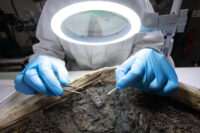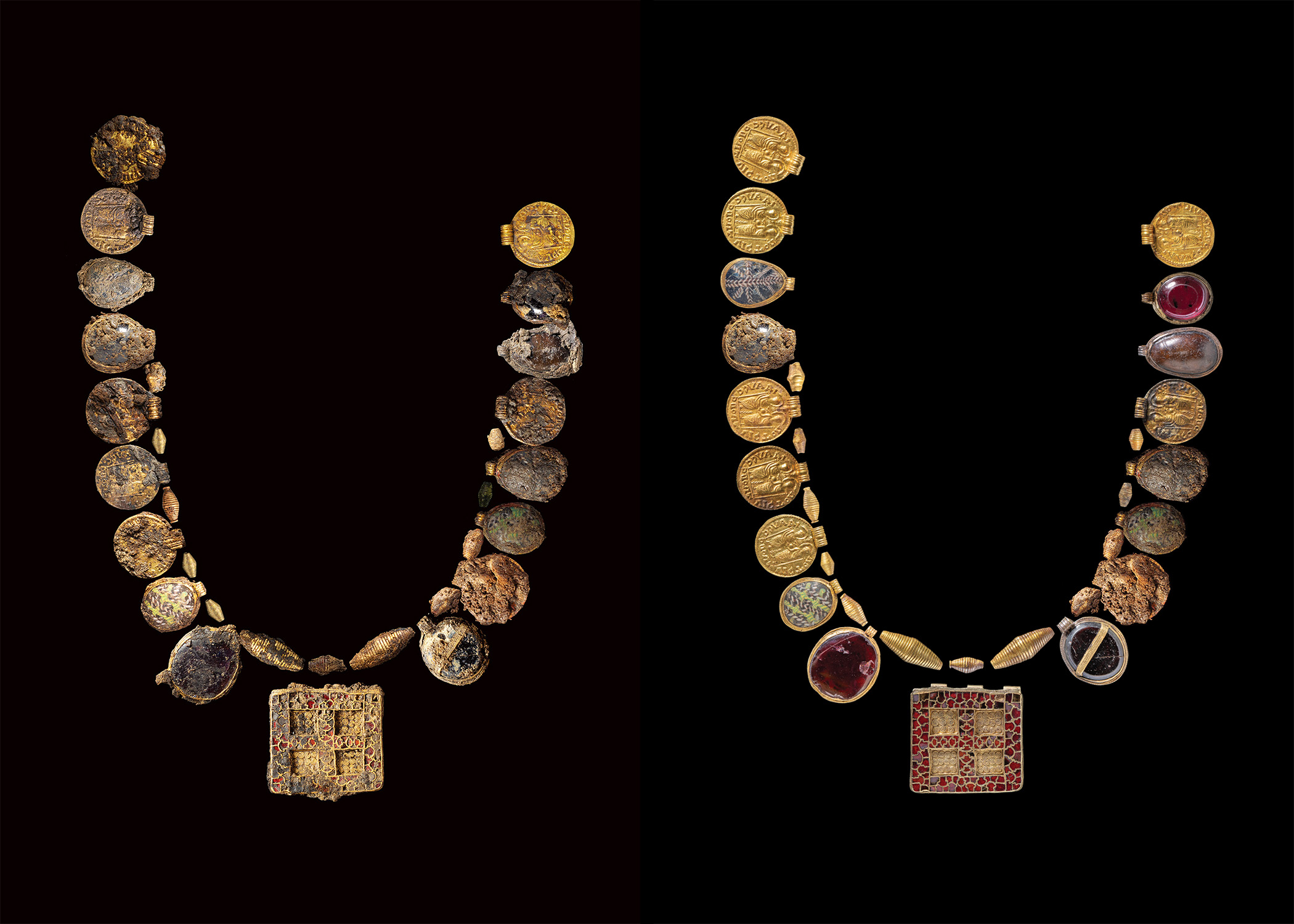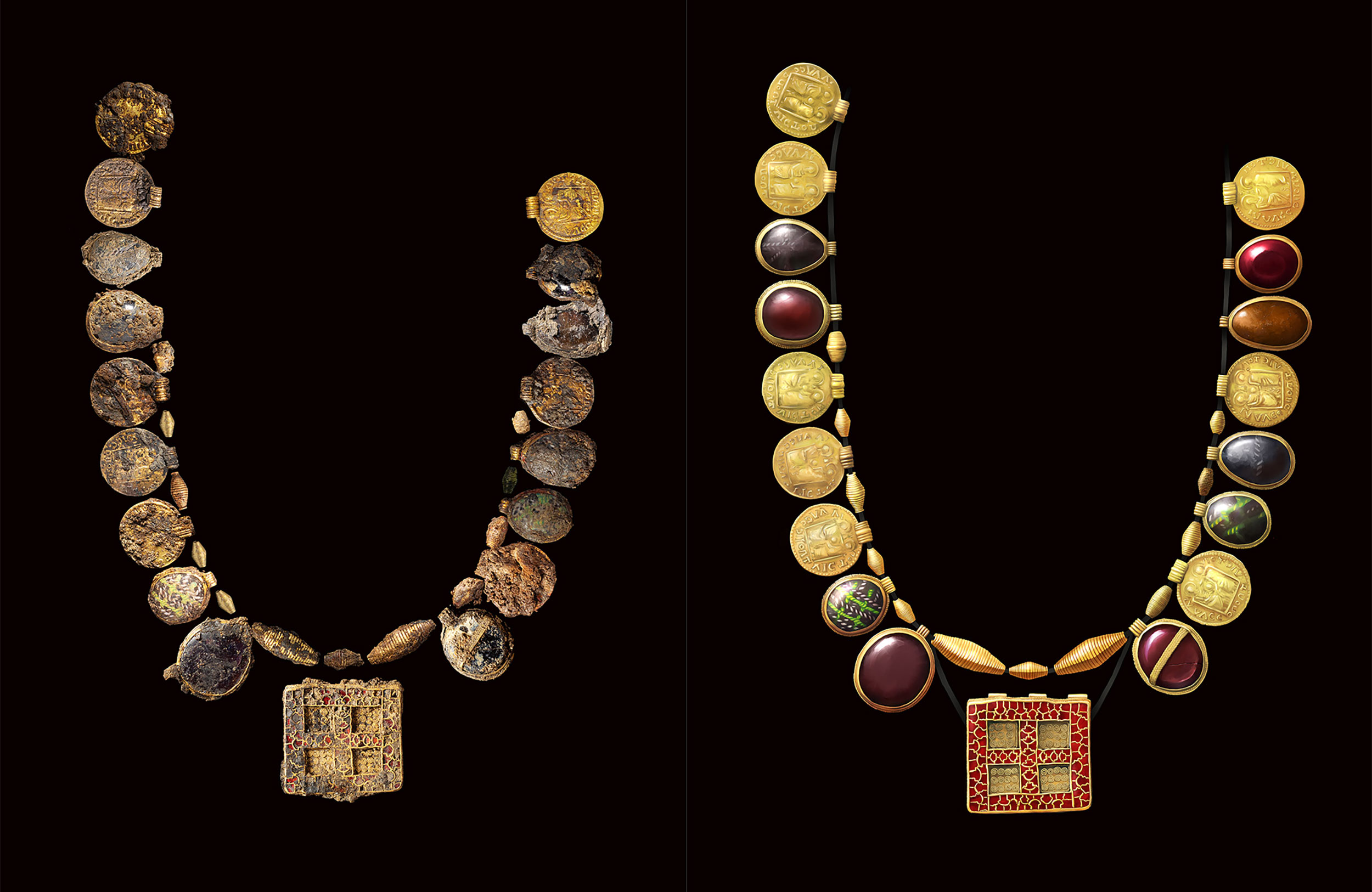A year of painstaking micro-excavations of soil blocks recovered from the 7th century bed burial unearthed near the village of Harpole, Northamptonshire, in April 2022, has revealed new details about the burial and its exceptional furnishings. The gold, glass and gemstone necklace with its 30 pendants has been cleaned, uncovering the intricacy of the goldsmithing and the brilliant colors of the glass and gems. The central pendant is a large square inlaid garnet and gold spirals, reminiscent of many of the pieces in the Staffordshire Hoard.
Here are photographs of the necklace before and after cleaning:
Comparing the after photograph to the digital reconstruction made in 2022, I’d say they were pretty much dead-on.
The unique silver pectoral cross is still in the process of being liberated from its soil enclosure. Archaeologists are excavating it extremely slowly because of its complexity and fragility.
A central cross is decorated with a smaller gold cross, which has a large garnet and four smaller garnets. At the end of each arm are smaller circular crosses made of silver, with garnet and gold centres. These are very similar to the pectoral crosses found in other high status female burials from this time, including the Trumpington burial. The use of these crosses within one larger cross, however, is unique and suggests the individual may have held a very special position within the Christian community.
Through micro-excavating the feature, our conservators have revealed it is mostly made of extremely thin sheets of silver attached to wood, its corroded surface barely distinguishable from the surrounding soil. We hope to identify the type of wood used, and better understand how the cross was constructed.
 The laboratory excavation has also found more skeletal remains of the high-status woman buried in the grave. In the initial in situ excavation, only a few partial teeth were discovered, but one of the soil blocks recovered from the dig turned out to contain more parts of the skeleton: an upper femur, a piece of the pelvic bone, vertebrae, part of a hand and wrist. The bones were pinned under a crushed copper dish that had been buried with the deceased. The copper prevented the usual decomposition process of the organic remains.
The laboratory excavation has also found more skeletal remains of the high-status woman buried in the grave. In the initial in situ excavation, only a few partial teeth were discovered, but one of the soil blocks recovered from the dig turned out to contain more parts of the skeleton: an upper femur, a piece of the pelvic bone, vertebrae, part of a hand and wrist. The bones were pinned under a crushed copper dish that had been buried with the deceased. The copper prevented the usual decomposition process of the organic remains.
Our specialists are continuing to analyse and piece together the story of the Harpole Burial. As well as getting a better understanding of the items recovered and individual buried, it is hoped that scientific techniques may reveal more about funerary rituals at the time. This potentially includes studying tiny fragments of organic matter, which may hold clues as to what the person was wearing and the types of materials they were lying on.


Absolutely fascinating and so interesting how the copper protected the organic remains. I hope that you continue to post more on this subject as the research unfolds.
Thank you, Livia. Your site is wonderful.